With The Incredible World of Photography - Ruth and Peter Herzog Collection, the Kunstmuseum Basel opens its first exhibition dedicated to the history of photography while presenting the first comprehensive portrait of Ruth and Peter Herzog’s photographic collection. The exhibition curated by Olga Osadtschy and Paul Mellenthin will run from July 18 to October 4, 2020 in the Kunstmuseum’s Neubau. And it is no coincidence that the exhibition will be held in the museum institution’s newest building, since since it opened in 2016 this has been intended to host ever-changing temporary exhibitions (the Neubau was built because neither the Hauptbau nor the Gegenwart, the other two buildings that make up the Kunstmuseum, the first opened in 1936 houses artworks from the permanent collection ranging from the 15th to the 20th century, and the second opened in 1980 houses contemporary art from the collection and the Emanuel Hoffmann Foundation, were designed and suited for this purpose. Hence the idea thateach building is intended to house its own artistic sphere while maintaining its own specific character).
Initially, in fact, the Kunstmuseum Basel was designed solely, with the exception of rare instances, to house and present its collection; however, when in 2002 the museum began to hold a variety of large special exhibitions each year, it realized that the architectural structure was unsuitable, despite rearrangements and renovations made in the 1990s and 2000s. Because of these shortcomings, entire sections of the permanent collection were often forced to be dismantled and the many works usually displayed in those rooms moved to storage to make room for special temporary exhibitions. The Neubau was thus designed by Christ & Gantenbein , who were able to connect the main building directly underground to the new one, and also took over many architectural elements from the Hauptbau to create a kind of continuity. In particular, Emmanuel Christ stated, “We sought this connection. We assumed from the beginning that an extension did not need to express its new role. The Kunstmuseum already had its own defined identity. When the extension is built across the street, there is no need to reinvent a new identity, rather it should be reinterpreted in a contemporary key.” Today that new extension hosts major special exhibitions and presents treasures from the art collection of the second half of the 20th century.
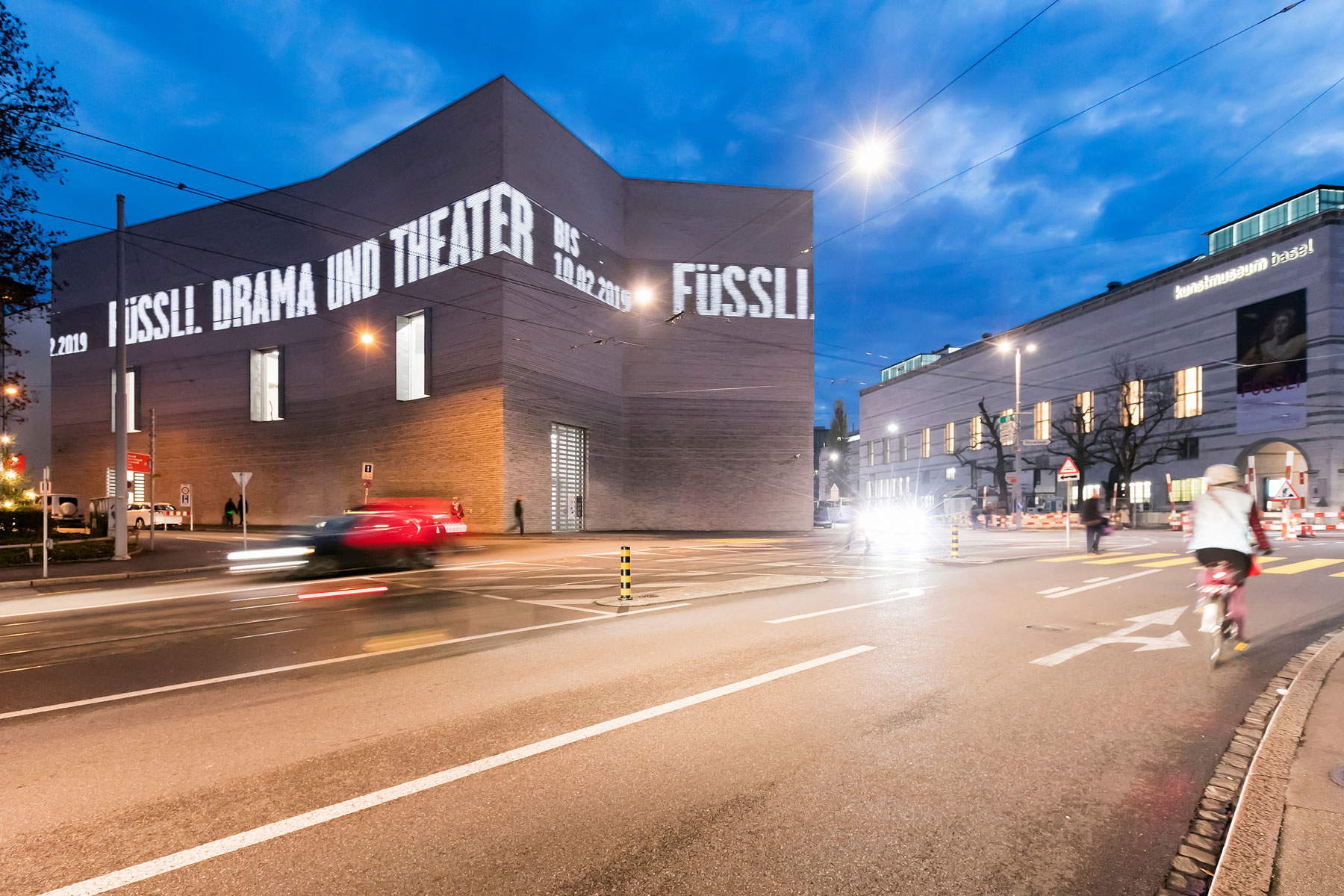 |
| Kunstmuseum Basel, the Neubau |
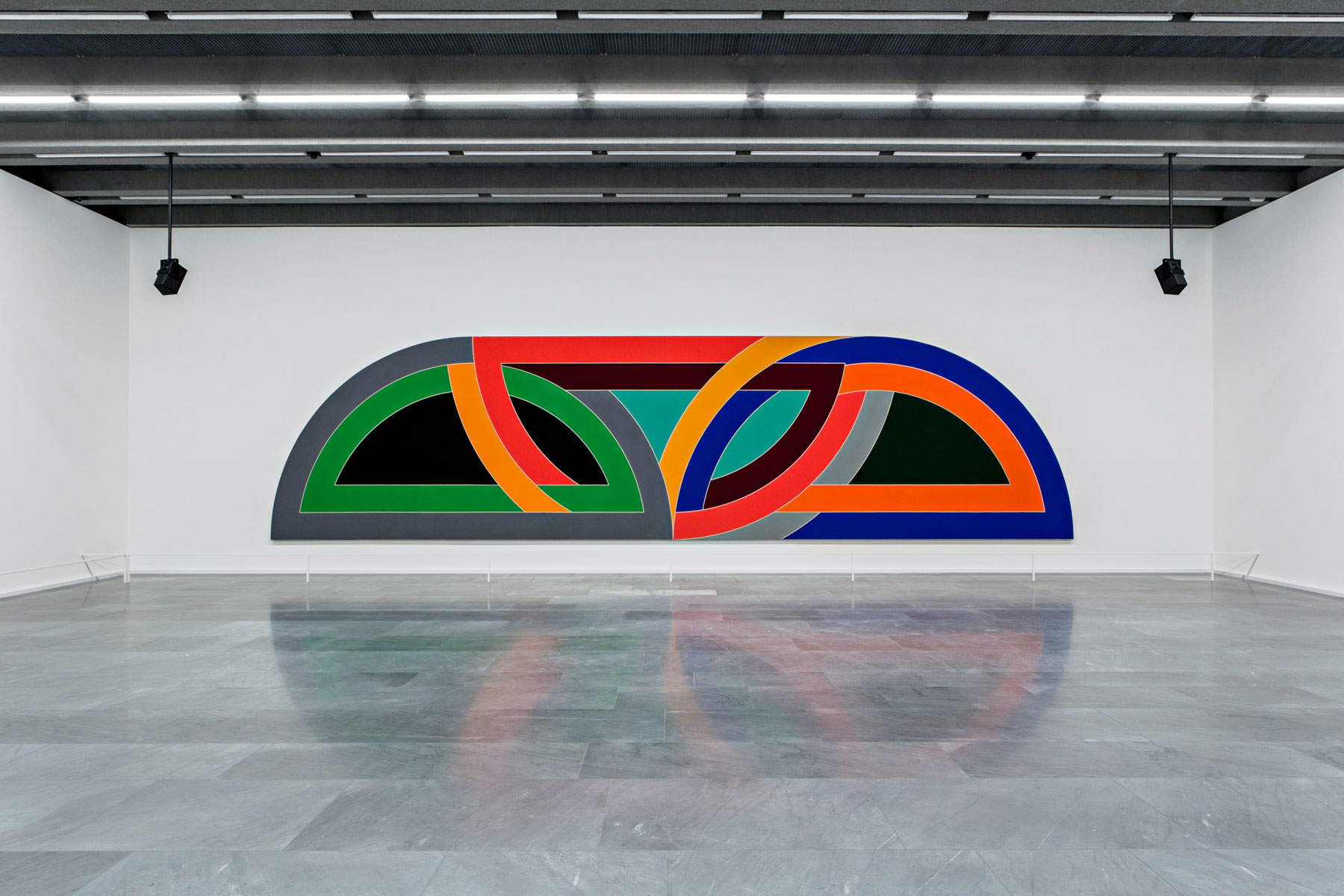 |
| Frank Stella, The Damascus Gate (Basel, Kunstmuseum). Ph. Credit Gina Folly |
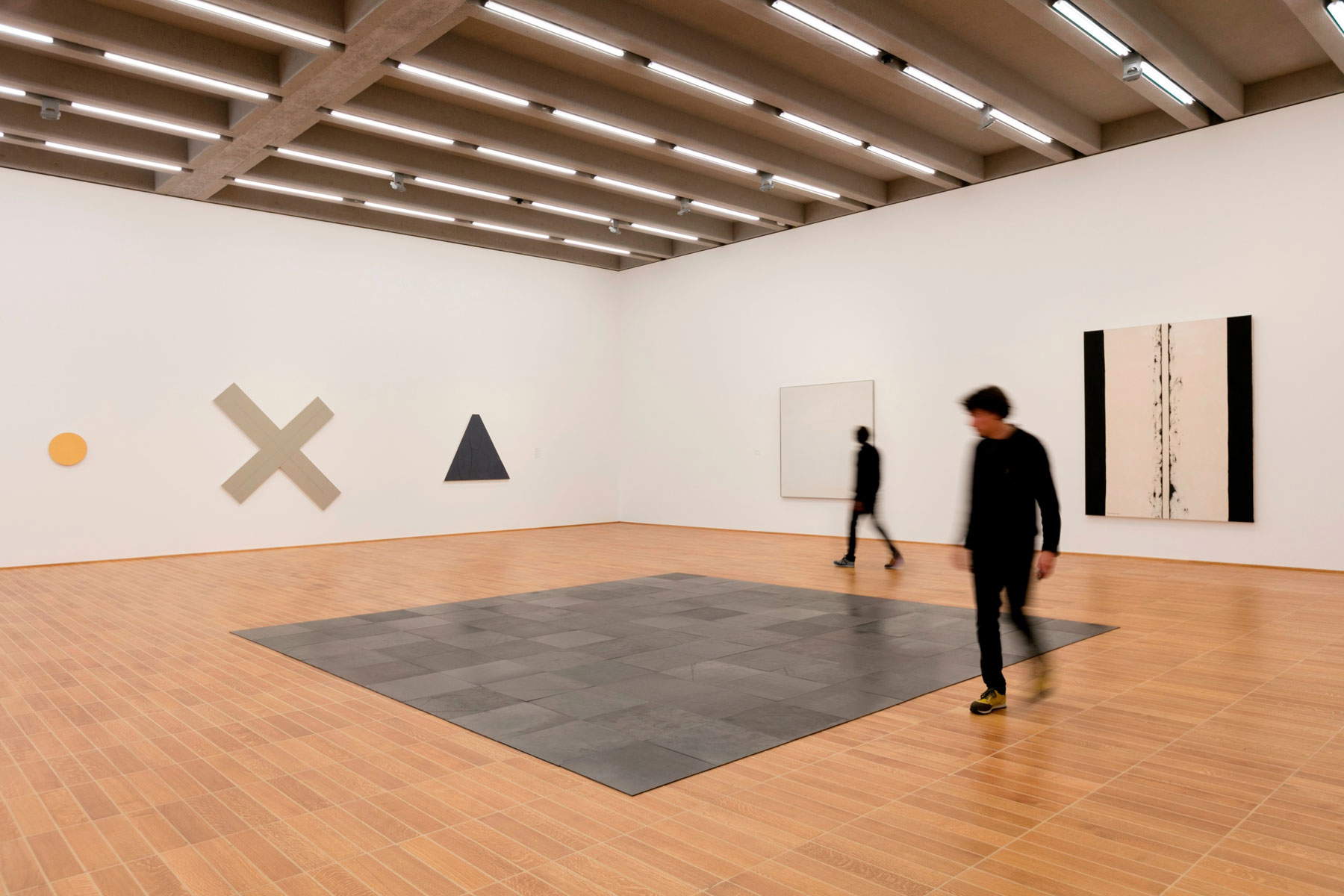 |
| Interior of the Neubau. Ph. Credit Julian Salinas |
Returning to the exhibition devoted to the collecting couple, their collection of more than five hundred thousand images began in the 1970s at a flea market in Zurich, when Ruth and Peter came across what would provide the impetus for that unique collection: an anonymous photograph depicting a group of spinners at the center of which a cute little dog was blissfully and happily seated. It was a scene that reminded Peter Herzog of his own family history. Both, however, recognized in that image the potential of photography, both as art and as document. From thatchance purchase at the flea market, Peter’s passion for photography was reawakened, and from the beginning the couple made a precise selection dictated by subjective but at the same time rigid criteria, even as we notice a seemingly chaotic juxtaposition and coexistence of very different images. A disorder that reflects the world on a small scale and links the photographic collection to the wonder cabinets of the early modern period. According to the Herzogs, a collection of photographs should represent all aspects of modern human life: the couple therefore decided not to give their collection a chronological order or according to the photographers who authored it, but the shots were grouped by themes, such as portrait, leisure, history, family, technology, science, industry, nature, war, and travel. “The common thread of the collection is the life of man in the industrial age,” Peter Herzog had said in 2016, and added, “In the diversity of the collection, we can get deep into the essence of photography and people.”
The collection includes shots from the beginnings of the photographic tool in about 1840 to the beginning of digitization in the 1970s and reflects all the major developments in analog photography. The couple is credited with important discoveries that have led to a greater understanding of the eventful and vibrant history of photography, and for this they are considered among the world’s top collectors of photography. In fact, the Herzogs have created nothing less than a photographic encyclopedia of life in the industrial age. The endless variety of anonymous masterpieces highlights a wealth of motifs and themes from around the world and demonstrates how photography can tell stories and tie itself to history. The entire collection traces different approaches to exploring the world through photography and to better understanding the tool itself. There is no one type of photography, no unified phenomenon, as each image opens up to a wide network of social, institutional and historical interconnections. In Bathers (Coney Island) we see bathers on the beach, some of whom have already jumped into the sea, but we do not know whether this is a private memory of a summer vacation or a totally calculated scene; we also do not know who the people portrayed in the picture are or even who the photographer is. However, whether it is a spontaneous or a studied shot, it tells an excerpt of maritime and summer life. The photo was later colorized, somewhat like Andy Warhol did with his silkscreens, such as with the portrait of Mao Zedong, preserved in the Kunstmuseum Basel itself. The two works mentioned, the one from the Herzog collection and the one by Warhol, will be placed in dialogue at the exhibition, but they are only one example of the various comparisons that will be visible to the public in the rooms of the Neubau. This kind of dialogue opens new perspectives on the debate between visual art and photography.
The approximately four hundred images selected from the entire collection and displayed at the temporary exhibition at the Kunstmuseum can be considered focuses of the collection covering amateur photography, commercial and scientific photography of the 19th century, advertising photography, and photojournalism of the 20th century. These are works by photographers from Switzerland and various countries around the world that have never before been exhibited to the public: in addition to pioneers such as Adolphe Disdéri, Gustave Le Gray, Eugène Atget, Fred Boissonnas, Charles Nègre, and Felice Beato, as well as other important photographers, such as Paul Marial or Hans Hinz, there are unknown amateur photographers. Art museums are wont to present photographs in the form of individual prints on paper, while this review aims to bring to attention the material diversity of photographic objects and do them justice, thus including daguerreotypes, ambrotypes, ferrotypes, salted paper prints, albumen prints, autochromes, and gelatin silver salt paper prints. In addition, the collection includes more than three thousand photo albums with photos from all over the world: most of the images concern Europe, but many others also depict views of Africa, Asia, and America. Photo albums are intimate objects that tell the story of an individual or a group: they are rich in snapshots and through them sometimes entire generations are known; often the photos were also accompanied by small souvenirs or hand-painted illustrations.
Collecting photos is not enough; it is necessary to be able to read them. “In view of the deluge of images that floods us today,” Peter had commented in 2016, “it’s about being able to read the images; we want to convey that.”
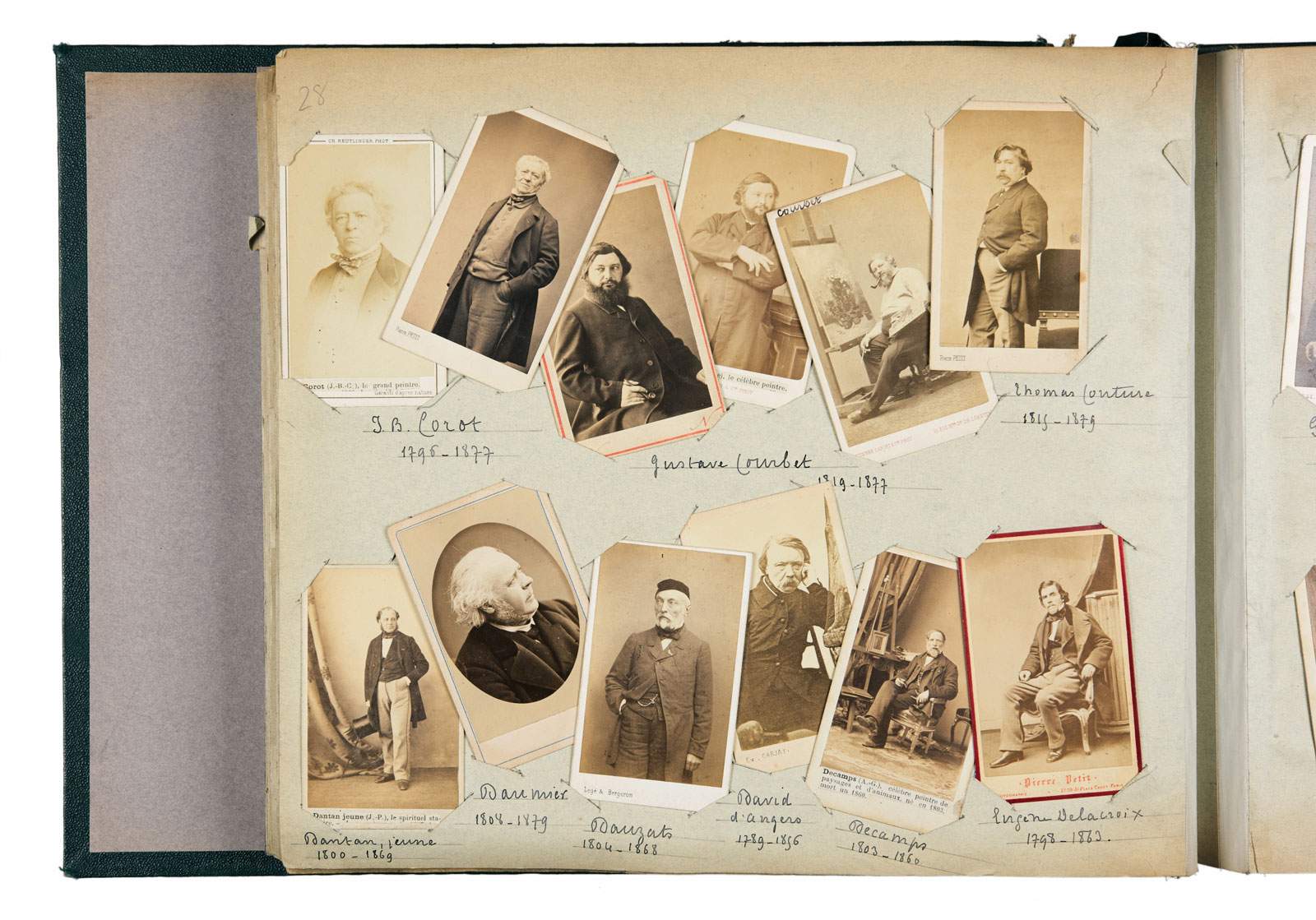 |
| Pierre Petit, Charles Reutlinger, Pierre Etienne Carjat, Legé et Bergeron and others, Portraits of Artists (1860-1875; Basel, Kunstmuseum, Herzog Collection) |
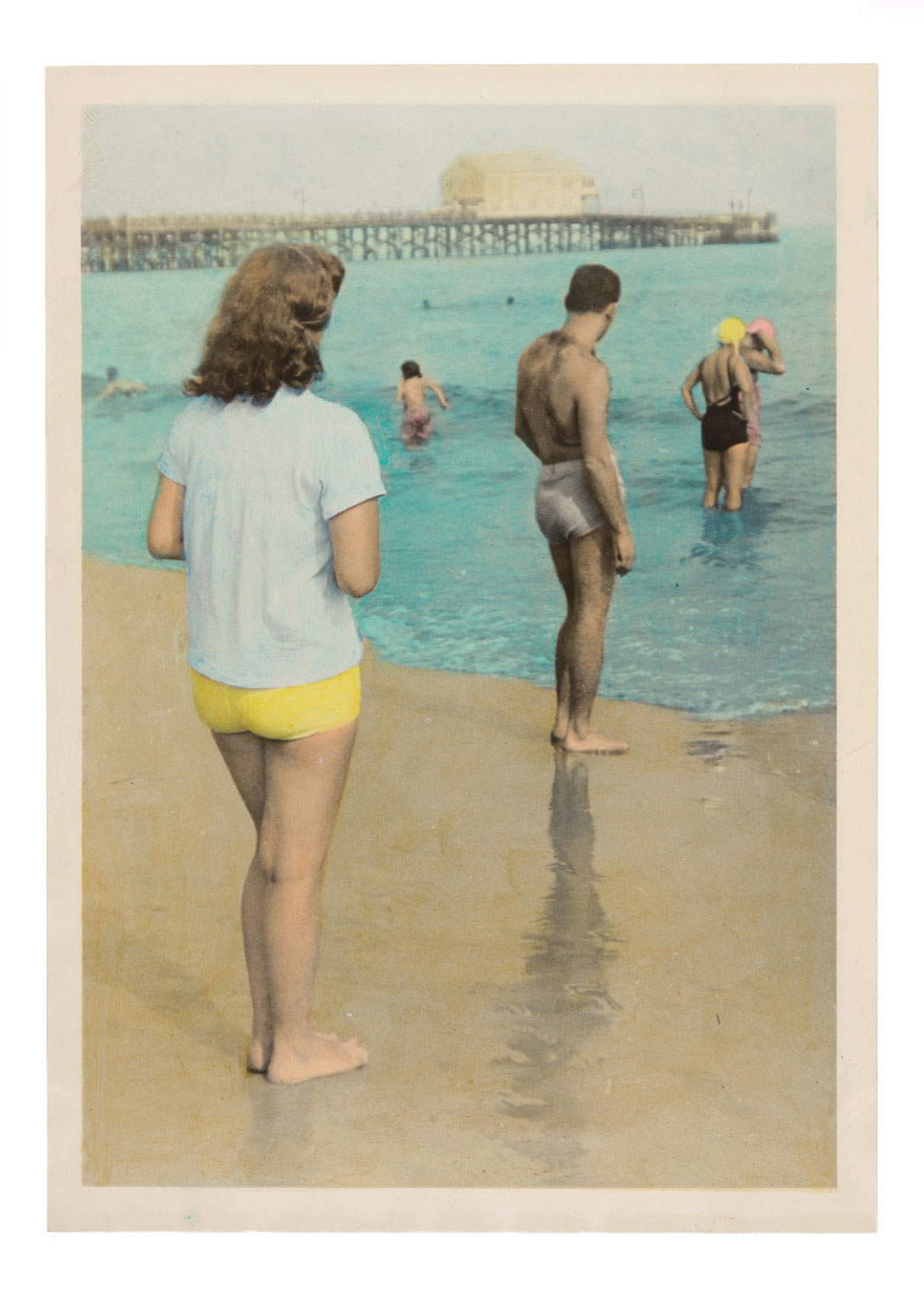 |
| Anonymous, Bathers (1950-1960; Basel, Kunstmuseum, Herzog Collection) |
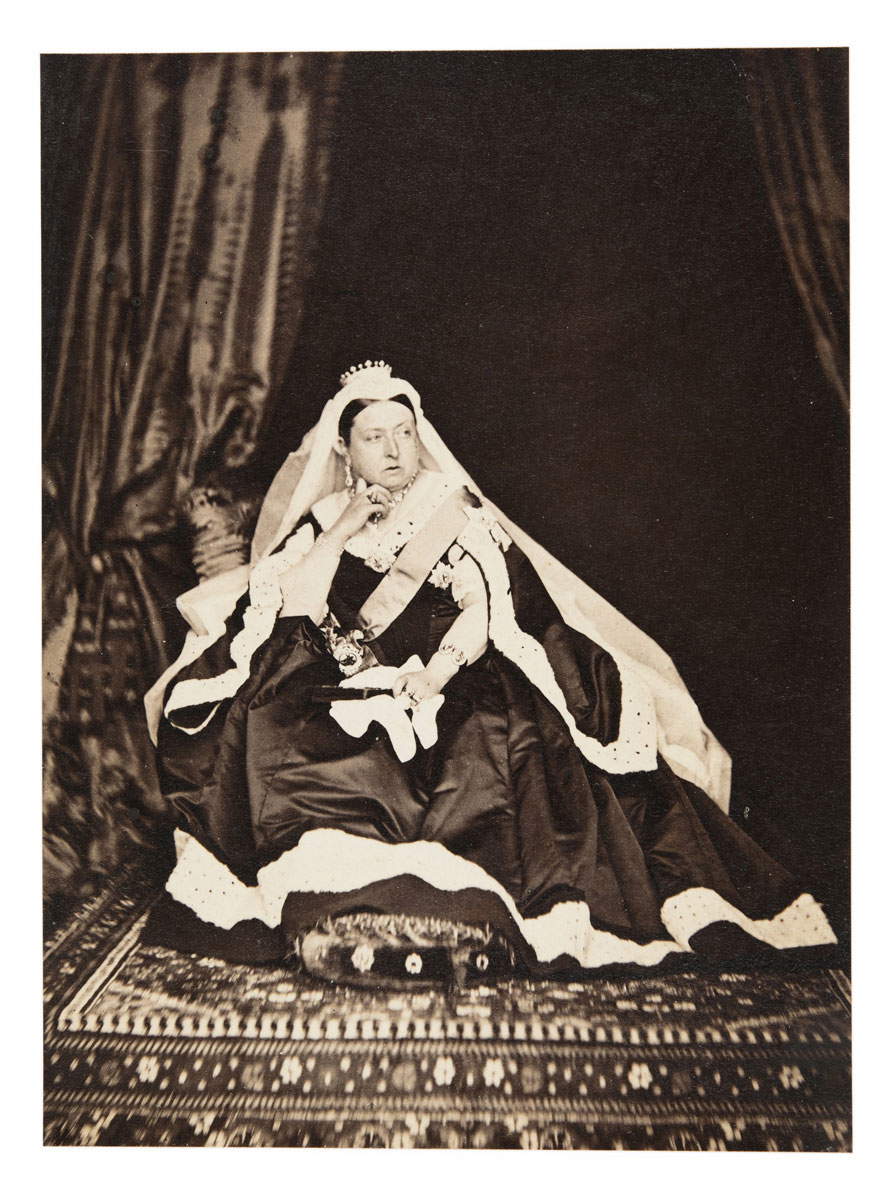 |
| William Bambridge, Queen Victoria (1866-1867; Basel, Kunstmuseum, Herzog Collection) |
The exhibition marks the beginning of a long-term collaboration between the Kunstmuseum Basel and the same city’s Jacques Herzog and Pierre de Meuron Kabinett, owner of the Ruth and Peter Herzog Collection since 2015. The nonprofit foundation intends to fully preserve the collection as a unique cultural asset of the city and make it accessible to both the public and scholars for research and publication purposes. At the Cabinet’s initiative and responsibility, an inventory project was carried out with the intention of cataloging the entire collection and systematically digitizing it to make it accessible. In addition, the Jacques Herzog and Pierre de Meuron Kabinett has created an innovative exhibition design for the important Basel museum venue inspired directly by the environment in which the works are placed at the Cabinet. The design takes into account considerations of perception and presentation of the works, many of which are in small format and sensitive to light. The variety and diversity of images that belong to Ruth and Peter Herzog’s photographic collection, as well as its qualities as an “encyclopedia of life,” are made explicit in the succession of nine galleries: each room offers visitors a taste of the different ways in which photography presents a wide range of motifs and themes, from the contemplation of single objects in surface compositions to wall projections of individual images.
The exhibition places original historical photographs in dialogue with major masterpieces from the Kunstmuseum and with works on loan from the Emanuel Hoffmann Foundation, including paintings by Vincent van Gogh and Robert Delaunay, works on paper by Andy Warhol and Martin Schongauer, as well as photographs by Thomas Demand and Bernd and Hilla Becher-an opportunity to highlight the dynamic interplay between photography and visual art and to construct comparisons on themes and formal composition, as well as to explore the limits of different media. Mutual influences then materialize in studies of fundamental issues in the world of photography, such as seriality, reproduction, and the importance of color or its absence. In addition to focusing on the photographic collection, the exhibition brings into play issues such as the relationship between archive and museum and the relationship between photography and art, without meaning by this the already canonized art photography. It then intends to reflect on how analog photography is highly relevant today and how it allows for meaningful conclusions about theuse of the digital image today.
On the occasion of the exhibition The Incredible World of Photography, a review and digitization project dedicated to the collections of the Ruth and Peter Herzog Collection, which was launched in 2015 by the Jacques Herzog and Pierre de Meuron Kabinett, was undertaken. Using the resulting digital materials, iart - Studio for Media Architectures in collaboration with students from the University of Lucerne developed an interactive installation that can be seen in the exhibition: the installation allows visitors to trace their personal approaches to the collection.
With seven other institutions, the Kunstmuseum Basel qualifies for the pilot project digitorials.ch; with support from Engagement Migros, the project develops individual strategies designed to meet the challenges of the digital world. Digitorial® combines innovative storytelling with multimedia experience, interweaving visual elements, sound and writing, configuring new standards for sharing cultural content with audiences. The first Digitorial®atthe Kunstmuseum is being held on the occasion of the exhibition The Incredible World of Photography - Ruth and Peter Herzog Collection.
 |
| The Herzog Collection, a photographic encyclopedia of life in the industrial age, on display in Basel |
Warning: the translation into English of the original Italian article was created using automatic tools. We undertake to review all articles, but we do not guarantee the total absence of inaccuracies in the translation due to the program. You can find the original by clicking on the ITA button. If you find any mistake,please contact us.